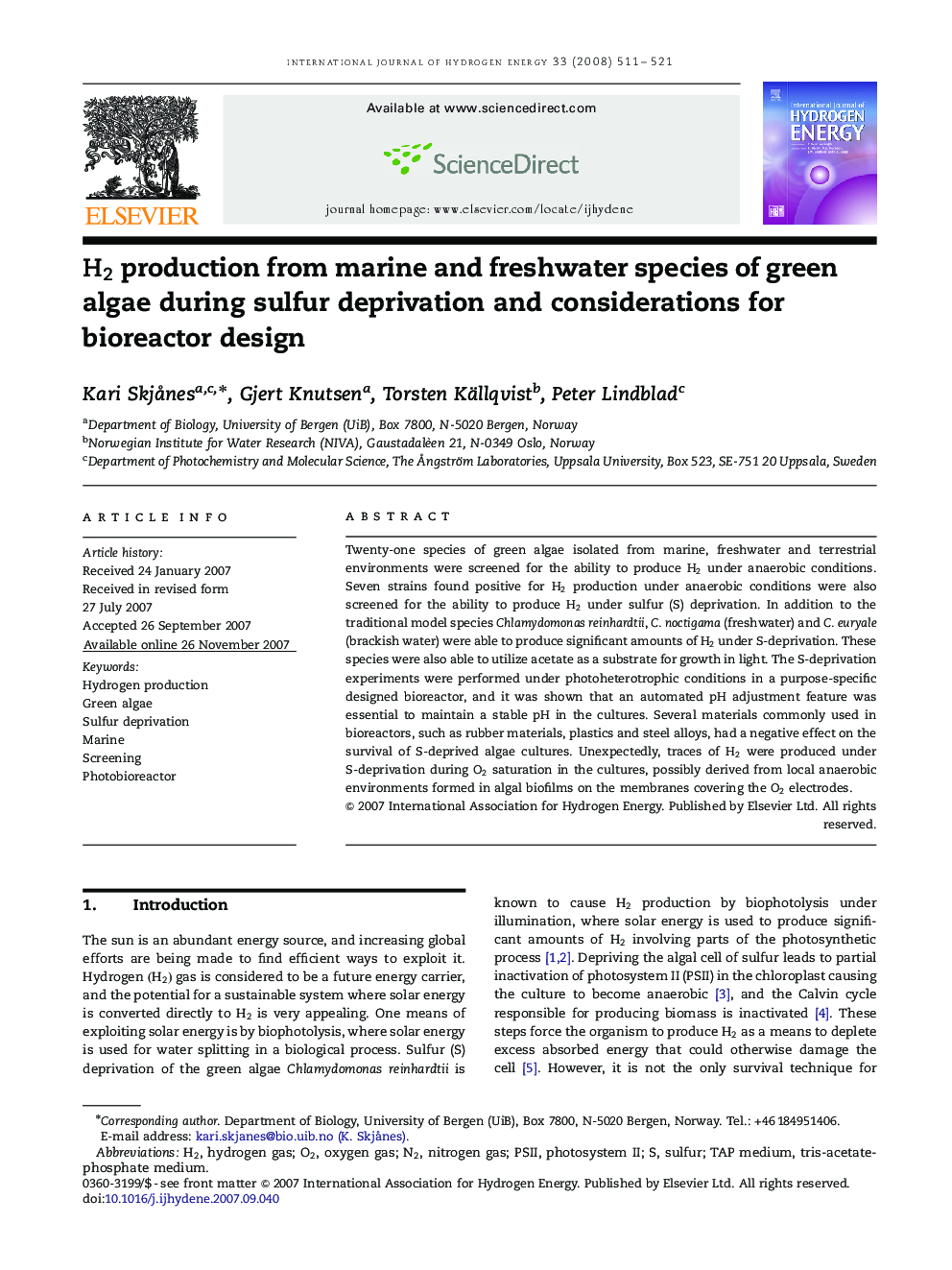| کد مقاله | کد نشریه | سال انتشار | مقاله انگلیسی | نسخه تمام متن |
|---|---|---|---|---|
| 1279976 | 1497664 | 2008 | 11 صفحه PDF | دانلود رایگان |

Twenty-one species of green algae isolated from marine, freshwater and terrestrial environments were screened for the ability to produce H2H2 under anaerobic conditions. Seven strains found positive for H2H2 production under anaerobic conditions were also screened for the ability to produce H2H2 under sulfur (S) deprivation. In addition to the traditional model species Chlamydomonas reinhardtii, C. noctigama (freshwater) and C. euryale (brackish water) were able to produce significant amounts of H2H2 under S-deprivation. These species were also able to utilize acetate as a substrate for growth in light. The S-deprivation experiments were performed under photoheterotrophic conditions in a purpose-specific designed bioreactor, and it was shown that an automated pH adjustment feature was essential to maintain a stable pH in the cultures. Several materials commonly used in bioreactors, such as rubber materials, plastics and steel alloys, had a negative effect on the survival of S-deprived algae cultures. Unexpectedly, traces of H2H2 were produced under S-deprivation during O2O2 saturation in the cultures, possibly derived from local anaerobic environments formed in algal biofilms on the membranes covering the O2O2 electrodes.
Journal: International Journal of Hydrogen Energy - Volume 33, Issue 2, January 2008, Pages 511–521